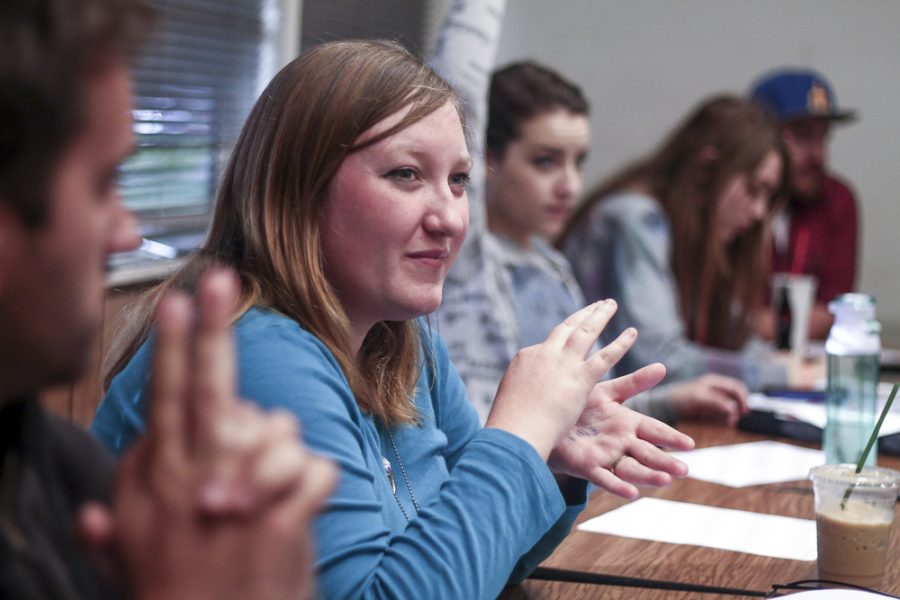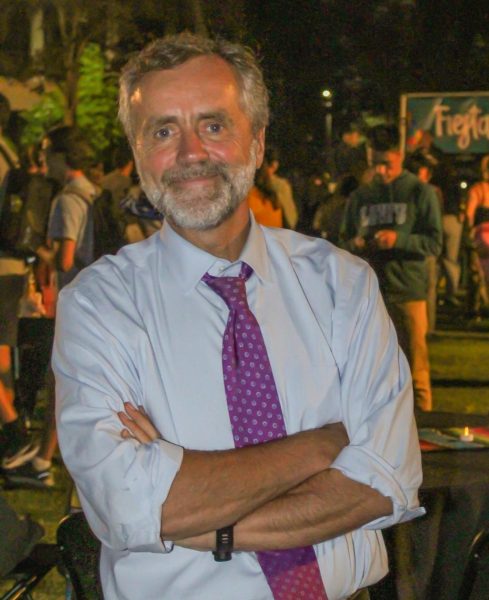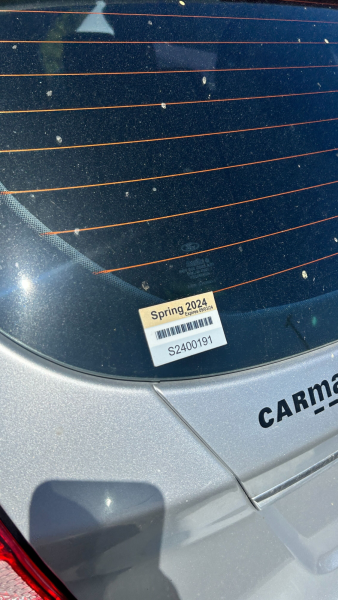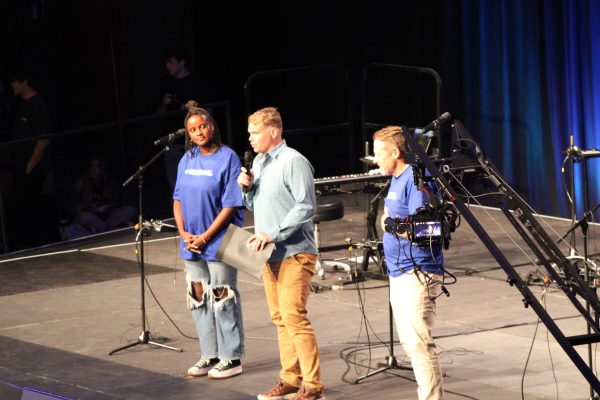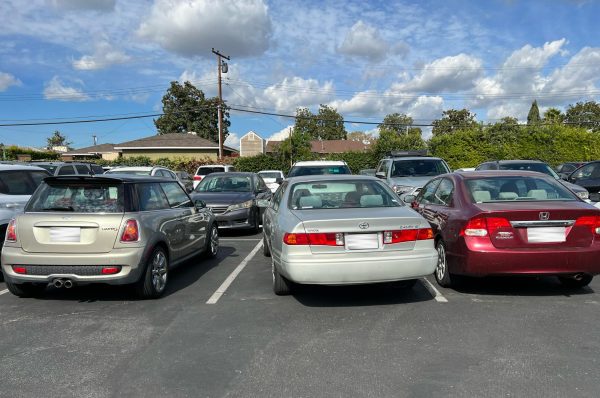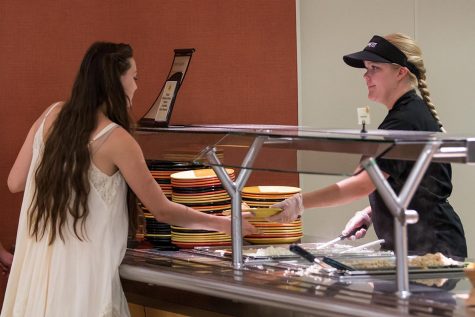American Sign Language empowers everyone
Learn the unspoken language to open new doors.
Junior nursing major Dominee Roehm learns the unspoken language that opens new doors. | Katie Evensen/THE CHIMES
May 5, 2015
Over the past year, many videos have circulated on social media of children with significant hearing loss receiving a cochlear implant and hearing their parents for the first time. When the child’s face glows with recognition of the parent’s voice, the viewer is supposed to react with tearful joy at the restoration of the hearing sense. What these videos do not show is the careful decision many parents must make in choosing what culture and type of communication they want their child to have. These videos automatically assume the hearing sense is necessary to function and the lack of it somehow impairs the person. This could not be further from the truth.
Reverberating airwaves is only one of many forms of communication. For those that are deaf, mute or hard-of-hearing, one of their main forms of interpersonal communication is American Sign Language. Based off French Sign Language, ASL does not exactly mirror the English language. The clunkier Signed English does that. Instead, it “talks about” English in its stylistically different and grammatically switched syntax. Thus interpreters, those who interpret ASL into English and back, have the same challenges as any other translator relaying a communication in a foreign language. Those challenges however, produce a clear message.
ASL does not simply have one formal sign for a particular English word or concept. Oftentimes, the language will paint a picture for the receiving partner in communication rather than “say,” for example, what a shape looks like or where to find a restaurant. Other times the meaning can be changed or intensified with the speed of the sign or with a facial expression. This synthesis of concept and image provides a more efficient means of communication, even for those who are hearing.
When you cannot find the words to describe something, ASL steps in to help. When you are too distant in a crowd for a voice to carry, ASL travels as far as the eye can see. When you need to remain silent in an audience, ASL will not perk anyone’s ears up. With all these uses, and so many more, why would we not want to give it a try?
In my last year here at Biola, I needed elective units to fill up my degree, and as I perused the catalog for something interesting to take I noticed ASL 1. I knew nothing about signing, not even the alphabet, so I figured the class would be a new challenge. Little did I know how right I was. In just the first month of the completely silent class, I experienced an entirely new world filled with joyous, noiseless conversations. Despite its two-hour length location in the dungeon known as ROLO, the classrooms in the lower level of Rosemead, I genuinely looked forward to learning something new twice a week in class. I really had to learn the language from scratch.
Along with the language comes an education of the culture. Awareness of the culture of the deaf and hard-of-hearing is vital to learning how to sign. Knowing how to properly refer to the people, such as never saying “hearing-impaired,” allows those of us in the hearing world to understand how to interact with this often unnoticed community.
I encourage anyone looking to find another manner of communication, as well as a better understanding of world around us, to take an American Sign Language class. Even if you do not know anyone who is deaf, having the ability to sign will prove useful not only for when you have your mouthful at dinner, but also when you do encounter a deaf person in your life one day and can communicate with them. Just one unspoken hello will brighten both of your days.


